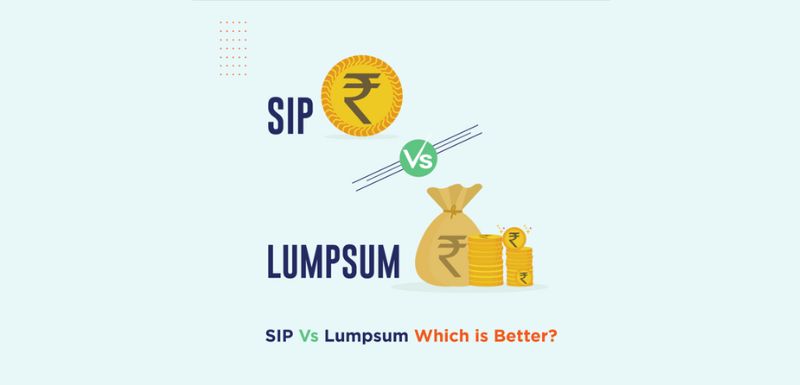A Decade of Investing: Analysing Average SIP Returns in 10 Years

In the last few years, many retail investors have started investing regularly in mutual funds through the systematic investment plan (SIP) route. Also, the stock markets have done well in the last few years. During the Covid pandemic, the Nifty 50 Index fell to levels of around 7,500.
Since then, it has more than trebled to levels above 22,500. Retail investors who have kept faith and continued investing have been rewarded handsomely. In this article, we will look at how the SIP culture has been building among retail investors and the returns SIPs have generated over the last decade.
Boom in SIP Accounts and Inflows
As per AMFI data, the number of new SIPs registered and the total number of SIP outstanding accounts has seen a good rise in the last three years.
|
Financial Year |
New SIPs Registered (lakhs) |
Total Outstanding SIP Accounts (lakhs) |
SIP Contribution (Rs. crores) |
Total SIP AUM (Rs. crores) |
|
Apr 21 – Mar 22 |
266.36 |
527.73 |
1,24,566 |
5,76,358 |
|
Apr 22 – Mar 23 |
251.41 |
635.99 |
1,55,972 |
6,83,296 |
|
Apr 23 – Mar 24 |
428.09 |
839.71 |
1,99,219 |
10,71,666 |
|
Apr 24 – May 24 (2 months) |
113.39 |
875.89 |
41,275 |
11,52,801 |
The above table shows how the number of total outstanding SIP accounts has increased rapidly from 527 lakhs to 875 lakhs in the last three years. Also, the total SIP assets under management (AUM) have doubled from Rs. 5.76 lakh crores to Rs. 11.52 lakh crores.
Now, let us look at how the monthly SIP inflows have fared in the last one year.
|
Month |
SIP Inflows (Rs. crores) |
|
June 2023 |
14,734 |
|
July 2023 |
15,245 |
|
August 2023 |
15,814 |
|
September 2023 |
16,042 |
|
October 2023 |
16,928 |
|
November 2023 |
17,073 |
|
December 2023 |
17,610 |
|
January 2024 |
18,838 |
|
February 2024 |
19,187 |
|
March 2024 |
19,271 |
|
April 2024 |
20,371 |
|
May 2024 |
20,904 |
As seen in the above table, the May 2024 SIP inflows of Rs. 20,904 crores are the highest ever we have seen in any month. Also, the above table shows how we have seen the highest-ever monthly SIP inflows in every single month in the last one year.
SIP Returns Over the Decade
In the earlier section, we saw how the SIP contributions from retail investors have been growing by leaps and bounds in the last few years. Amidst the growth in SIP contributions, let us look at how have been the SIP returns.
Let us take an example of an active large-cap fund and a Nifty 50 Index fund and see how the SIP returns have been.
Large Cap Fund – SIP returns
|
Investment Tenure |
1 Year |
3 Years |
5 Years |
7 Years |
10 Years |
|
Total Amount Invested (Rs.) |
1,20,000 |
3,60,000 |
6,00,000 |
8,40,000 |
12,00,000 |
|
Market Value (Rs.) |
1,33,857 |
4,44,730 |
9,03,640 |
14,12,188 |
25,26,794 |
|
Returns (XIRR) |
22.17% |
14.42% |
16.41% |
14.59% |
14.25% |
Note: The above data is for a Large Cap Fund – Regular Plan – Growth option. The returns are as of 30th April 2024 for a monthly SIP of Rs. 10,000 invested on the 1st working day of every month.
The above table shows how the Rs. 10,000 monthly SIP investment, over a period of ten years, generated an XIRR return of 14.25%. It is a decent return. It more than doubled the total investment of Rs. 12 lakhs to Rs. 25.26 lakhs.
Similarly, if we look at the data for mid and small-cap active funds, some have delivered better returns than large-cap active funds. While mid and small caps may have lower liquidity and higher volatility, they have the potential to deliver higher returns than large caps.
SIP Investing for Goals
You should consult a qualified and experienced investment advisor for your financial planning. They can help you classify your financial goals into short, medium, and long-term goals and make a goal plan for each to achieve them. For long-term financial goals like retirement planning, where the investment time horizon is more than five years, you should invest in equity mutual funds through the SIP route.
A monthly SIP or Systematic Transfer Plan (STP) will help you make staggered investments in an equity fund. In the long run, the market will go through up and down economic cycles. For example, during the decade 2014-24, the market saw adverse phases like demonetisation, sell-off in mid and small caps, the Covid pandemic, the Ukraine-Russia war, the Israel-Hamas war, Union Election results, etc. During these phases, the market corrected where the degree of the correction ranged from 5 to 50%. However, after every correction, the market turned around, recouped the losses, and went on to make new all-time highs.
When the markets are going down, the SIP will provide you with the Rupee Cost Averaging (RCA) benefit. You will accumulate more units of the scheme with a lower Net Asset Value (NAV). When the correction phase gets over, the market will resume its upward trend. The value of the units accumulated at a lower NAV earlier will go up, and benefit your overall portfolio.
SIPs can make you a disciplined investor, help you ride sail through the period of market volatility, and create wealth for you in the long run. SIPs can help you achieve your financial goals and attain financial freedom.
Your Investing Experts
Relevant Articles
SIP Vs Lumpsum Investments: Which Is Better?
Investing towards financial goals can be done in two ways. The first option is to invest a part of the income every month for the long term. The other option is to invest a lumpsum amount once and stay invested for the long term. Both options have pros and cons, and investors often wonder which option they should choose. In this article, we will discuss SIP vs Lump sum, and which approach an investor should take.
A Decade of Investing: Analysing Average SIP Returns in 10 Years
In the last few years, many retail investors have started investing regularly in mutual funds through the systematic investment plan (SIP) route. Also, the stock markets have done well in the last few years. During the Covid pandemic, the Nifty 50 Index fell to levels of around 7,500.
Should I Invest Now or Wait for a Market Correction ?
On 12th June 2024, the Nifty 50 Index hit a new all-time high of 23,441. The small correction on 4th June 2024, resulting from lower-than-expected seats won by the BJP, lasted for just one week or so. With markets touching new all-time highs once again, investors waiting on the sidelines are wondering whether they should invest at these levels or wait for a correction.


